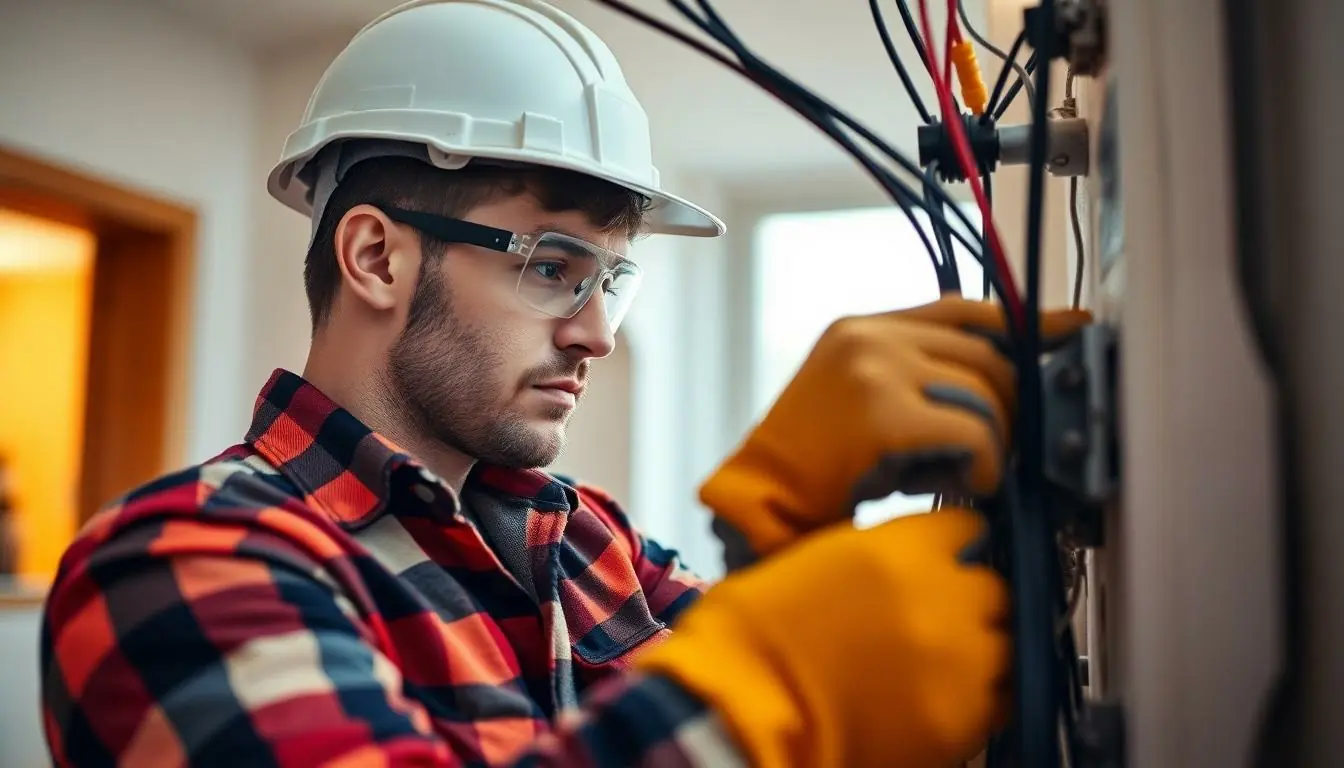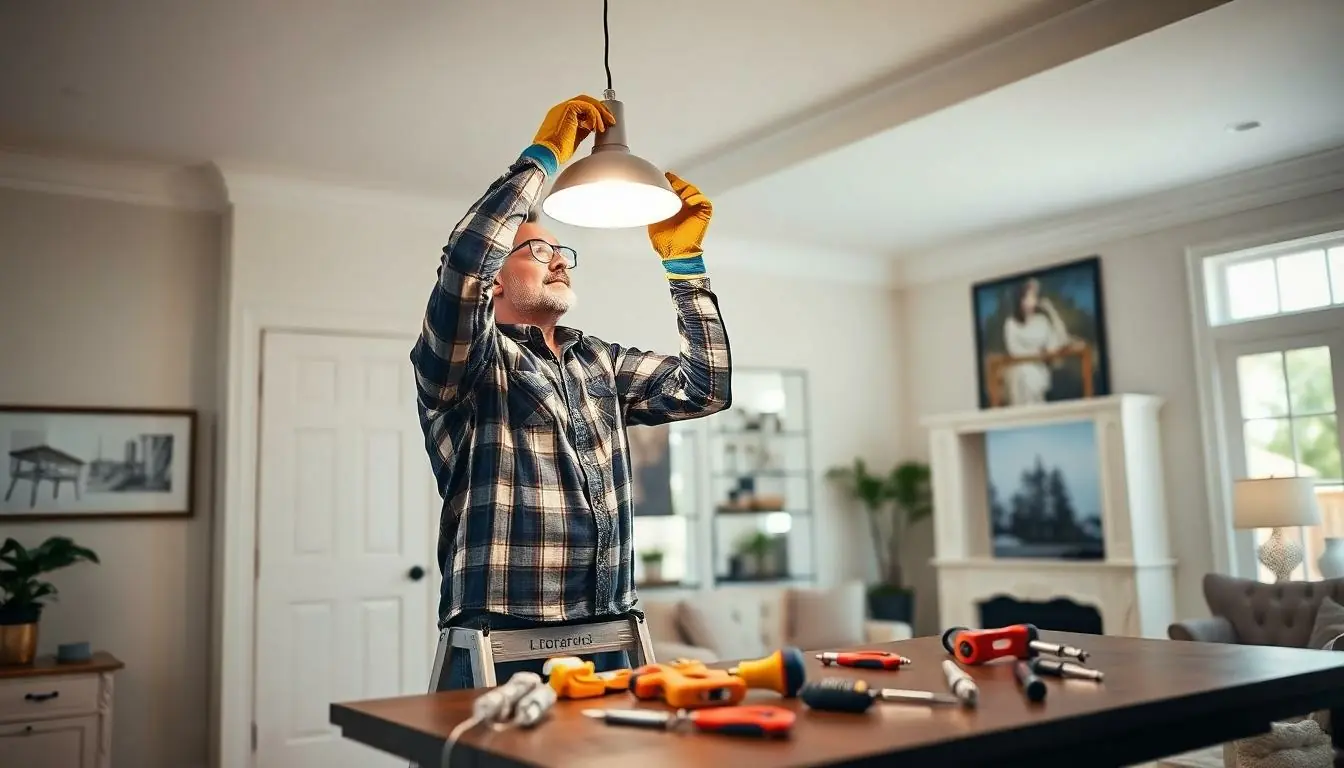Table of Contents
ToggleWhen it comes to DIY projects, few things spark excitement quite like tackling electrical work. Sure, it might sound a bit shocking, but with the right guidance, anyone can turn their home into a dazzling display of creativity and functionality. From adding a new light fixture to wiring up a snazzy outdoor outlet, DIY electrical projects not only save money but also boost confidence.
Overview of DIY Electrical Projects
DIY electrical projects offer a range of tasks that can enhance home functionality and aesthetics. Homeowners can install new light fixtures, switches, or outdoor outlets with relative ease. Engaging in these projects promotes skill development and independence. Many individuals find that tackling simple electrical tasks, like replacing an old light switch or fixing a faulty outlet, boosts their confidence.
Cost savings represent another significant advantage. Professionals often charge hefty fees for even minor tasks, while DIY projects allow individuals to handle similar jobs at a fraction of the price. Tools needed for basic electrical work are often accessible and can be found at local hardware stores, making it convenient for anyone to start.
Safety remains a critical consideration while undertaking electrical tasks. Understanding wiring and compliance with local codes is essential for successful completion. Using a reliable guide or attending a workshop can aid individuals in navigating safety precautions effectively. Many online resources and tutorials provide step-by-step instructions, ensuring clarity throughout the project.
Additionally, completing DIY electrical work enhances the overall home value. Proper lighting can create inviting spaces and attractive outdoor areas. Homeowners often notice improved energy efficiency through LED installations and other updates.
Ultimately, DIY electrical projects empower individuals to transform their living spaces while acquiring valuable knowledge. Embracing these challenges can lead to a greater sense of accomplishment and satisfaction.
Safety Tips for Electrical Work

Safety is paramount during any electrical project. Following guidelines and using appropriate equipment can significantly reduce risks.
Essential Safety Gear
Using essential safety gear ensures protection from electrical hazards. Safety glasses shield eyes from debris and sparks. Insulated gloves safeguard hands from electric shock. Non-slip footwear helps maintain stability while working on surfaces. A hard hat protects against falling objects. Keeping first aid kits nearby provides immediate assistance in case of accidents.
Common Hazards to Avoid
Avoiding common hazards is crucial for safe electrical work. Working with live wires leads to electric shock; always turn off power before starting. Overloading circuits can result in fires; check load limits for outlets and breakers. Wet conditions increase slip and shock risks; work in dry environments. Inadequate lighting can lead to accidents; ensure adequate illumination in work areas. Failing to follow local codes may result in fines; familiarize yourself with municipal regulations. Staying vigilant and informed enhances safety throughout any DIY electrical project.
Popular DIY Electrical Projects
DIY electrical projects encompass straightforward upgrades and installations that enhance home comfort and functionality. Several options exist for homeowners looking to tackle these projects.
Home Lighting Upgrades
Shifting to energy-efficient LED fixtures saves electricity while improving aesthetics. Installing dimmer switches allows for adjustable lighting, catering to different moods and occasions. For outdoor spaces, adding pathway lights enhances safety and security. Consider pendant lights in kitchens or dining areas for a modern touch. Each upgrade not only beautifies the home but also lowers energy bills over time.
Smart Home Integration
Integrating smart lighting systems grants control through smartphones or voice commands. Smart plugs enable timers for devices and appliances, offering convenience and energy savings. Homeowners can set automated schedules for lights, enhancing security when away. Connecting security cameras and smart doorbells adds an extra layer of safety. Technology transforms how individuals interact with their spaces, making daily routines more efficient.
Basic Wiring Projects
Replacing outdated outlets or switches boosts both safety and functionality. Homeowners can install GFCI outlets near water sources to prevent shock hazards. Understanding circuit configurations allows for expansion, such as adding additional outlets where needed. Running new wiring for ceiling fans or light fixtures increases ventilation and brightness. Each project fosters independence and deepens knowledge of electrical systems.
Tools and Materials Needed
Engaging in DIY electrical projects requires specific tools and materials to ensure safety and efficiency.
Must-Have Tools for DIY Electrical Work
Essential tools include wire strippers for removing insulation from electrical wires. Screwdrivers come in various sizes and types, crucial for securing and removing fixtures. A voltage tester ensures that circuits are not live before work begins, increasing safety during projects. Pliers, especially needle-nose, help manipulate wires in tight spaces. Additionally, a drill with a bit set assists in making precise holes for fixtures and wiring. Having a level ensures that installations, such as light fixtures, are straight and properly aligned. Overall, gathering these tools contributes to a successful DIY experience.
Recommended Materials for Projects
Quality materials significantly impact the outcome of DIY electrical work. Electrical wire is necessary for connecting different parts of the system, with common types like Romex and THHN covering various applications. Light fixtures require compatible bulbs, often LED for energy efficiency and longevity. Outlets and switches must meet local electrical codes, with GFCI outlets being essential for wet areas. Junction boxes are important for housing connections between wires safely. Using electrical tape and wire connectors ensures secure, insulated connections among wires. Selecting the right materials enhances durability and safety in each project.
DIY electrical projects not only enhance home functionality but also empower individuals with newfound skills and confidence. With the right tools and knowledge, anyone can tackle simple tasks that lead to significant improvements in their living spaces. Prioritizing safety and adhering to local regulations ensures a smooth and rewarding experience.
As homeowners explore these projects, they’ll discover the satisfaction that comes from transforming their environment while saving money. Embracing DIY electrical work opens the door to creativity and independence, making it an invaluable pursuit for anyone looking to elevate their home.







